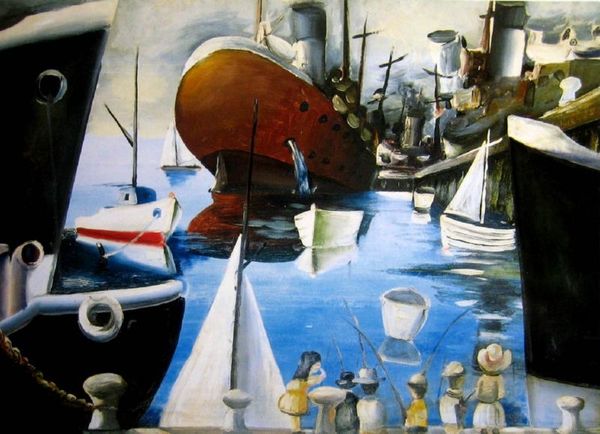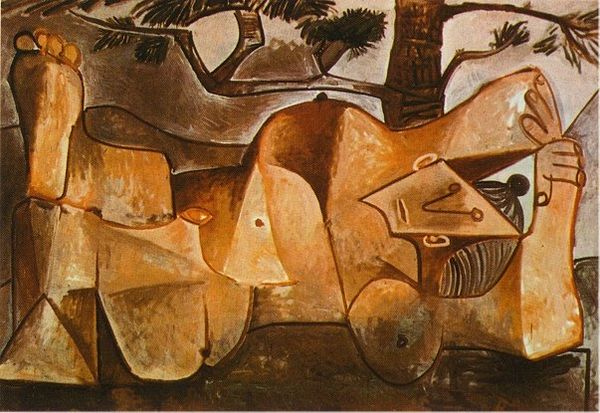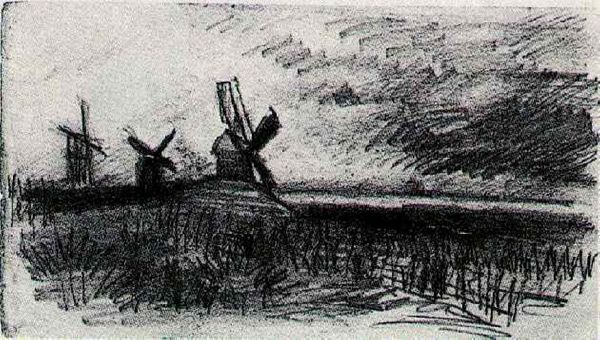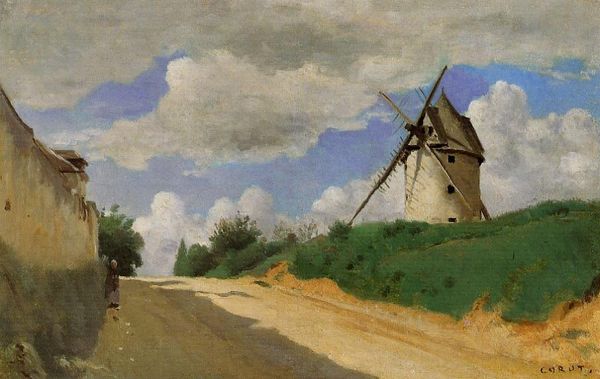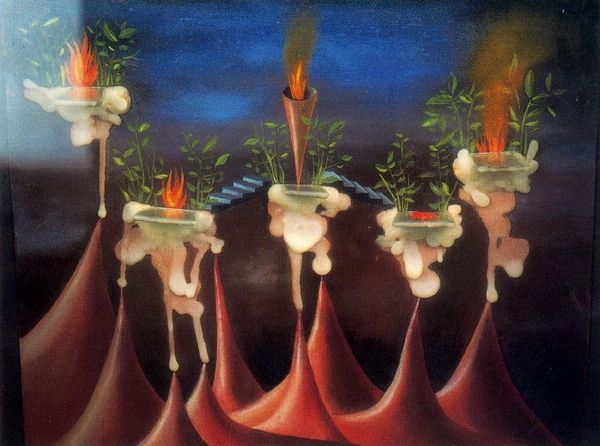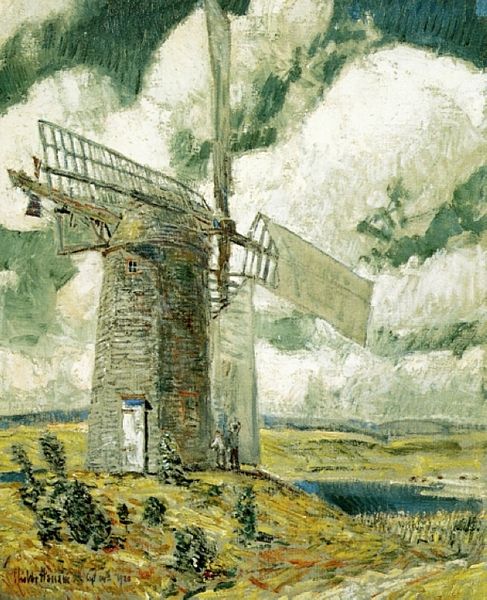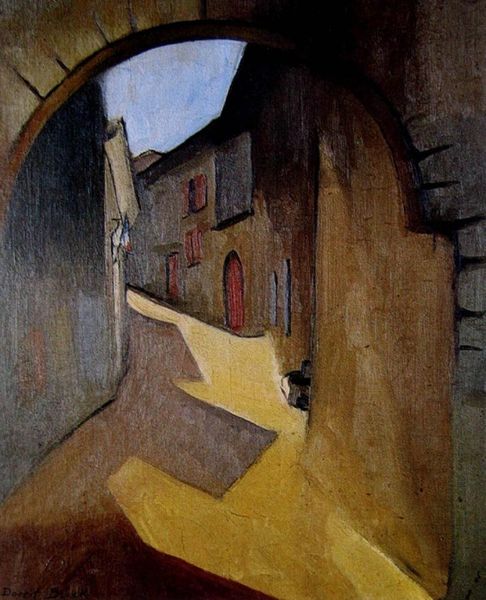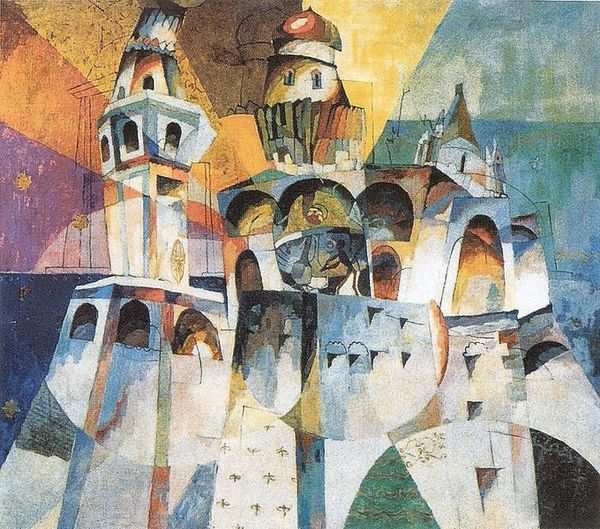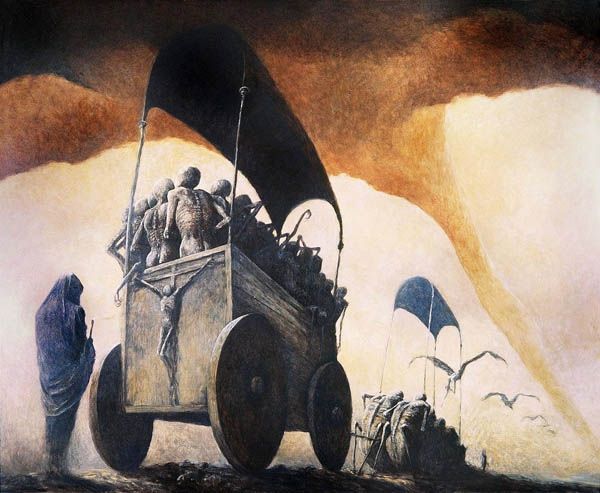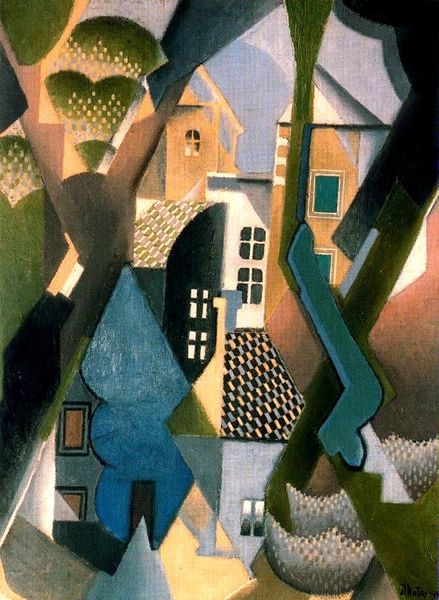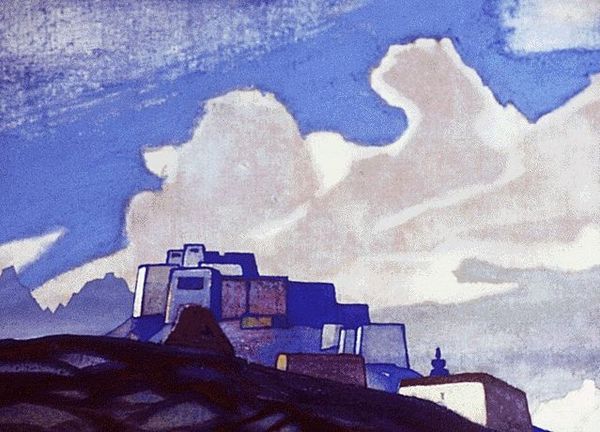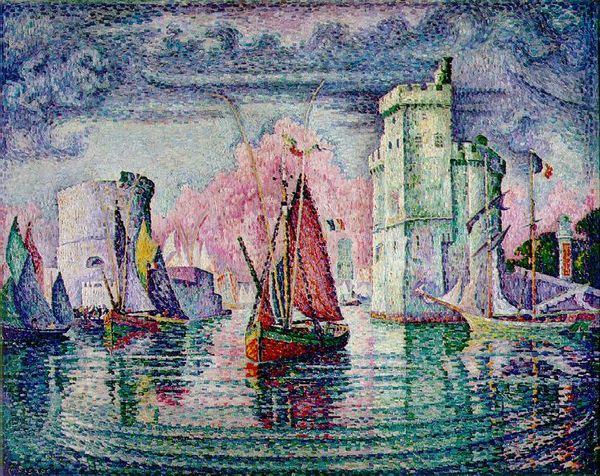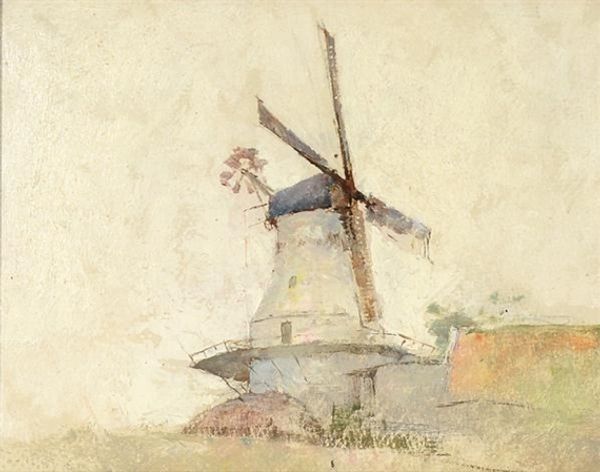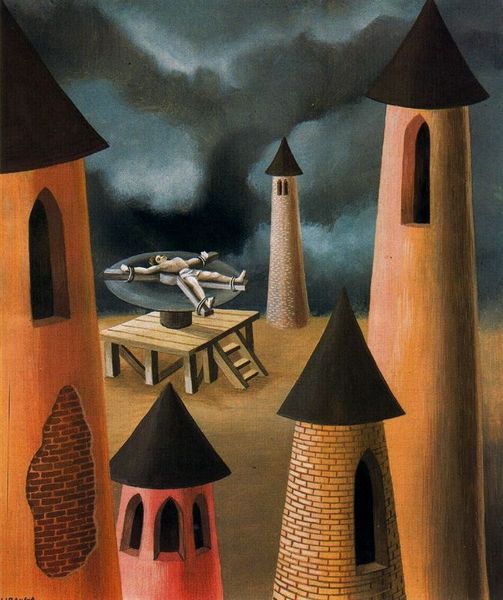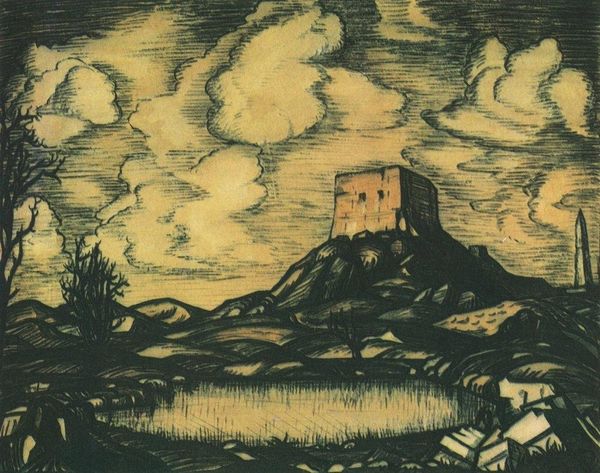
Copyright: Esteban Frances,Fair Use
Editor: This is "Don Quijote," painted in 1965 by Esteban Frances, using acrylic paint. It’s quite striking—the scene is dominated by windmills under a stormy, dark sky. What do you see in this piece? Curator: I see a powerful commentary on the futility of battling against systemic forces, couched within the familiar narrative of Don Quixote. Frances gives us windmills rendered in an expressionistic style, yes, but the very choice of subject matter opens the door to broader interpretations. Editor: How so? Curator: Think about it: Don Quixote famously misinterprets the windmills as giants. He’s tilting at what he *perceives* to be an injustice. Frances, working in 1965, in the midst of social upheaval, might be suggesting that many battles against perceived injustices are equally misguided. Do we risk fighting against shadows? Editor: So, you’re saying the painting isn't just about the literary character, but a metaphor for social and political struggles? Curator: Precisely. Are we effectively identifying the true source of our problems, or are we attacking illusions? The darkness of the palette also underscores a sense of disillusionment, perhaps hinting at the exhaustion of activism. What is gained and who benefits? Editor: That makes me see it differently. At first, I saw just windmills. Now, I think of Frances challenging the way people act within activism. Curator: Indeed. And by examining Frances's work through a socio-political lens, we uncover richer layers of meaning that resonate even today.
Comments
No comments
Be the first to comment and join the conversation on the ultimate creative platform.
